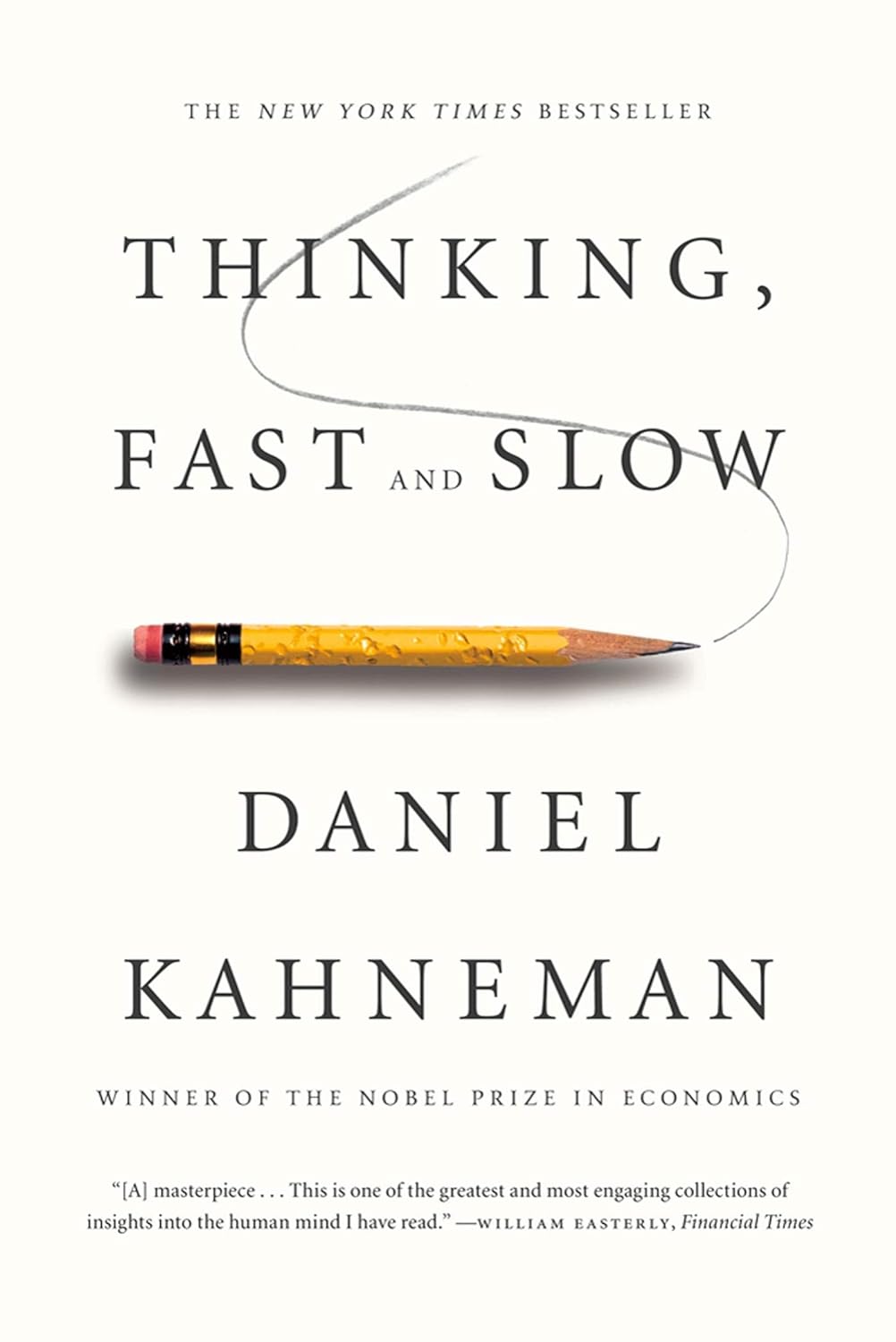

Thinking, Fast and Slow
Books | Psychology / Cognitive Psychology & Cognition
4.4
(27.7K)
Daniel Kahneman
Major New York Times bestsellerWinner of the National Academy of Sciences Best Book Award in 2012Selected by the New York Times Book Review as one of the ten best books of 2011A Globe and Mail Best Books of the Year 2011 TitleOne of The Economist's 2011 Books of the Year One of The Wall Street Journal's Best Nonfiction Books of the Year 20112013 Presidential Medal of Freedom RecipientKahneman's work with Amos Tversky is the subject of Michael Lewis's The Undoing Project: A Friendship That Changed Our MindsIn his mega bestseller, Thinking, Fast and Slow, Daniel Kahneman, the renowned psychologist and winner of the Nobel Prize in Economics, takes us on a groundbreaking tour of the mind and explains the two systems that drive the way we think. System 1 is fast, intuitive, and emotional; System 2 is slower, more deliberative, and more logical. The impact of overconfidence on corporate strategies, the difficulties of predicting what will make us happy in the future, the profound effect of cognitive biases on everything from playing the stock market to planning our next vacation—each of these can be understood only by knowing how the two systems shape our judgments and decisions.Engaging the reader in a lively conversation about how we think, Kahneman reveals where we can and cannot trust our intuitions and how we can tap into the benefits of slow thinking. He offers practical and enlightening insights into how choices are made in both our business and our personal lives—and how we can use different techniques to guard against the mental glitches that often get us into trouble. Winner of the National Academy of Sciences Best Book Award and the Los Angeles Times Book Prize and selected by The New York Times Book Review as one of the ten best books of 2011, Thinking, Fast and Slow is destined to be a classic.
Self Help
Psychology
AD
Buy now:
More Details:
Author
Daniel Kahneman
Pages
512
Publisher
Farrar, Straus and Giroux
Published Date
2011-10-25
ISBN
1429969350 9781429969352
Ratings
Google: 4
Community ReviewsSee all
"One of my favorites that I’ve read. Part of this book was read for a political psychology class I took but I read the rest on my own time due to my fascination with the topics. These very thought processes are instrumental in the way we think about each other and everything around us. A must read for everyone to better understand our own cognitive faculties and fallacies."
"Kahneman's book is a very approachable intro to behavioral psychology. In particular, he investigates situations in which human intuition fails and "irrational" decisions are made without even realizing it. He points out several concepts for which human intuition is particularly poor - including regression to the mean and FILL IN HERE. He also investigates cognitive biases including the availability heuristic, loss aversion, the halo effect, the anchoring effect, and unconscious substitution for an easier problem. Another interesting finding is "ego depletion" in which your ability to make rational choices and control your judgement declines as your mental capacity is "depleted" by difficult tasks. Kahneman also goes on a bit of a rampage against "experts" and provides many examples where a "weighted algorithm" has better performance on average than experts because it isn't tempted by cognitive bias. This book is worth reading for Kahneman's thoughts on insurance alone.<br/><br/>To illustrate the sort of thinking in the book - one of the examples that he uses all the time is from his days in the Israeli Air Force. Pilot trainers noticed that pilots who had just been praised for having a good flight tended to do worse on their next flight. Pilots who had done poorly and had subsequently been yelled at did better. Thus, the military drew the conclusion that yelling at pilots improved performance. However, this is simply a case of regression to the mean - yelling is inconsequential.<br/><br/>Some of the most practical advice in the book: <br/><br/>My advice to students when I taught negotiations was that if you think the other side has made an outrageous proposal, you should not come back with an equally outrageous counteroffer, creating a gap that will be difficult to bridge in further negotiations. Instead you should make a scene, storm out or threaten to do so, and make it clear—to yourself as well as to the other side—that you will not continue the negotiation with that number on the table.<br/><br/>If you are serious about hiring the best possible person for the job, this is what you should do. First, select a few traits that are prerequisites for success in this position (technical proficiency, engaging personality, reliability, and so on). Don’t overdo it—six dimensions is a good number. The traits you choose should be as independent as possible from each other, and you should feel that you can assess them reliably by asking a few factual questions. Next, make a list of those questions for each trait and think about how you will score it, say on a 1–5 scale. You should have an idea of what you will call “very weak” or “very strong.” These preparations should take you half an hour or so, a small investment that can make a significant difference in the quality of the people you hire. To avoid halo effects, you must collect the information on one trait at a time, scoring each before you move on to the next one. Do not skip around. To evaluate each candidate, add up the six scores. Because you are in charge of the final decision, you should not do a “close your eyes.” Firmly resolve that you will hire the candidate whose final score is the highest, even if there is another one whom you like better—try to resist your wish to invent broken legs to change the ranking."
"Excellent insight into the biases and processes that are present in our minds at all times, despite us being unaware of them. "
C S
Cole Shattuck
Similar Books
4.1
4.1
4
4.5
4.4
3.9
4.2
4.2
3.9
3.9
3.6
3.6
4
4.1
4
3.8
3.9
4.2
3.9
3.9








